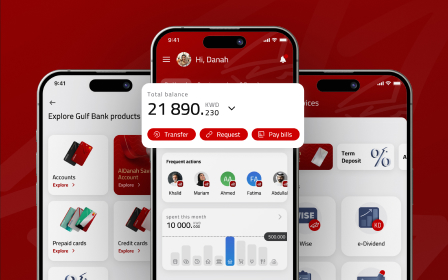How to design an app like AirBnB
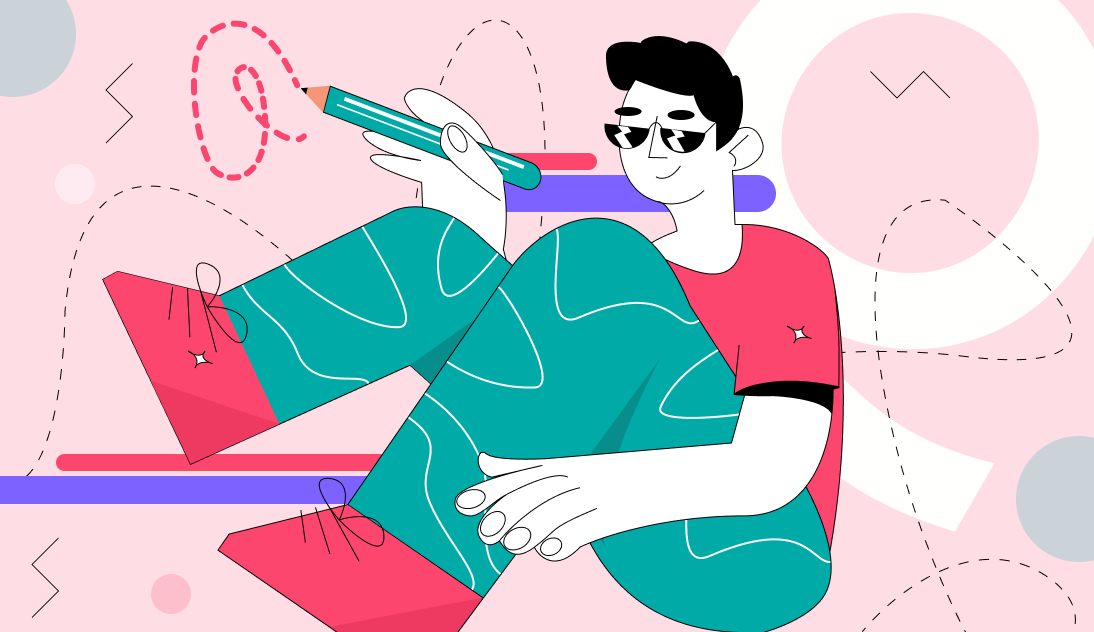
AirBnB is a famous marketplace that has an inspirational story and showcases smart solutions in tough situations. It’s an example of how to build and monetize win-win scenario, trust and willpower.
The company demonstrated that to become successful a strong idea has to be supported with customer insights, regular improvements and successful decisions.
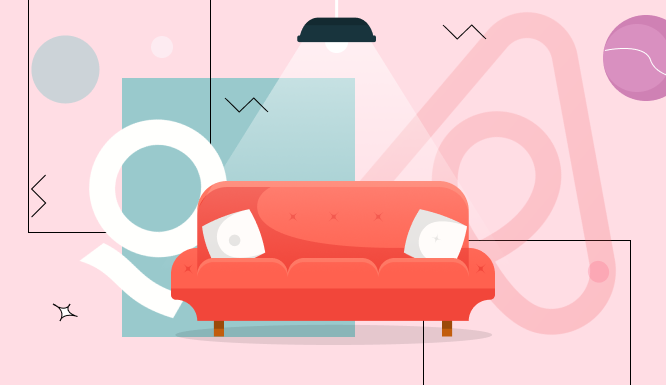
Behind every great business, there’s a story. And this one is incredible.
2 roommates in San Francisco started air Bread and Breakfast (yup, that’s what AirBnB stands for). Rent costs are crazy there, you know. One day guys found themselves lacking money to pay the rent.
During a large design conference in town, they quickly built a landing page, bought a few inflatable mattresses and sold the sleeping spots cheaper than a hotel rate. Their first client was a designer who liked the idea and helped design a pitch deck for investors.
The idea sounded awesome on paper, though most investors rejected them because their hypothesis based on experience with 3 customers.
Result: 8 website versions, tens of presentations, 20 credit cards in a negative balance, and 0 perspectives.
At Democratic Party Convention in Denver, guys started selling flakes branded with Obama and Maccain images. And pitching investors on a paper banner. Result: $30k raised in flakes sales(yup, these were expensive because of relevant branding) invested these in ads, got noticed by Y-Combinator’s Paul Graham.
That’s where the fun began.
The founders raise $600k in a month and use their service to save on apartment rentals. AirBnB reached its 1st million rentals through the platform in 1 year and launched in 89 countries.
In 2011 they hit 1 billion valuation.
That’s where fun got interrupted.
In 2012 AirBnB faced reputational damage. Users spoiled inventory in rented apartments and robbed the hosts.
Result: tons of lawsuits that lasted for 2 years and new security and insurance policies.
Moving on and getting over.
Once legal limitations and international regulation difficulties were over, AirBnB redesigned its product and continues to add new features and opportunities.
AirBnB has a valuation of $25 billion, 500k people using the service every night and this has no serious signs of stopping.
For us, it’s an excellent example of a die-hard self-belief and business owners that seek opportunities when things don’t work out.
AirBnB business model
AirBnB is a marketplace for room and apartment rentals.
The model has 3 customers:
Host: owns a property like room, apartment or house and is willing to rent the available space to make extra money. AirBnB pays owners directly and gets a small commission from each booking.
Guest: a traveler who chooses a room to stay. He can use all sorts of filters like location, price, ranking, amount of beds, and more. A guest has to be verified with Government ID and pays upfront through AirBnB. AirBnB charges a commission from a guest as well.
Photographer: In cities where the service is most popular, AirBnB has a network of photographers who can shoot high-quality interior photos. AirBnB pays directly to its photographers. Improving photography quality made a breakthrough in AirBnB history as it appeared to be the main selling point.
AirBnB solves a problem for each user-role. It enables anyone who has a spare room to become a ‘freelance hotel owner.’ It helps travelers find more accommodation options at lower pricing. From a marketing point of view, AirBnB utilizes a mix of conversion based and reputational model. The main channels of customer acquisitions are internet ads, retargeting, email campaigns, promotional offers and word of mouth.
How AirBnB benefited from Design Thinking
The most crucial part of design thinking is empathy. To utilize this power the owners became the service repeated customers.
Moreover, every new employee on their first day at work has to suggest how to improve the company without any limitations. That’s how the new logo appeared. The new employee told, because the service is so aspirational, it should use it the brand. Day after AirBnB graphic design features the updated ‘heart’ logo instead of the old ‘star’.
The new AirBnb logo resulted in 30% higher engagement and gave the company another growth boost.
AirBnB App Features
Though it seems like a small app at first sight, you’ll notice it’s quite big once we break down the roles and features needed to build an app like this.
Host features:
Registration/Log-in. The hosts are required to enter personal data and information about their apartments.
Onboarding. AirBnB listing interface looks familiar to new hosts because it feels a lot like a social media account for their apartment. The listing also helps by sending a professional photographer (if available) to make pretty pictures and suggesting average pricing in the location.
Listing Management. Update amenities, photos, descriptions, instructions, etc. Hosts can fully manage their properties anytime.
Review System. Unlike many marketplaces and listings, AirBnB protects hosts by introducing a traveler review system. If you steal your host’s spoon, your future hosts will know. What’s interesting about the review system is that no one can see a review until he leaves his.
Host Interaction. Hosts can decline requests they don’t like or set an auto-request approval. According to AirBnB agreement, hosts and guests are obliged to treat everyone equally irrelevant of their religion, country of origin or gender. Multiple violations of this policy were reported. That’s why if a host declines someone, he’s not able to rent out on those days.
Booking History. Hosts can access the complete history of when and who booked with them.
Guest features:
Registration/Log-in . The users go through a quite simple sign up process at first. However, to make their first booking, they are required to take quite a heavy onboarding. Guests have to enter their phone, code from SMS, photograph their government ID, and provide more trust details. Yeah, that’s one of AirBnB design problems. But design has to solve problems. Building trust to guests/hosts is the #1 problem to solve for such app and AirBnB has succeeded with this one.
Profile Settings. Life’s changing, the hosts can update, their information like email, phone, password and more. Each profile has its reputation meter and reviews which support the culture of using the service and increases trust.
Messenger. AirBnB makes it easy to communicate directly between the roles using its messaging system. It also stimulates a timely response by adding push notifications.
Payment System. Guests select the preferred payment method, currency, make the payments, save receipts view transaction history.
Search Filter. Users can find their perfect place faster by using smart filters like visit dates, number of visitors, room vs. complete apartment, location, price range, and more. Are you designing a search interface for yourself? Be sure to check out our best practices for designing search interfaces.
Bookmarks. For a guest who didn’t manage to book his favorite place and want to track availability. Wishlists would come in handy for those who intend to decide later or don’t know the dates yet.
Promo codes. AirBnB strategy relies heavily on net promotion. That’s why users get credit money for recommendations. Everyone can create his coupon and share it with his network. If someone uses it, both the referral and the referee get a reward.
Maps . Airbnb makes excellent use of maps by showcasing the available options and labeling them with price tags. That enables travelers to evaluate the situation in a city quickly.
Support and Help . There’s an extensive FAQ section that allows users to get fast answers to their questions. It’s maintained with the AirBnB admin app that analyzes behavior, queries, and complaints.
Review system. That’s the part of the reputational strategy. Guests review hosts and vice versa. Everyone wants a background check before coming. That’s the quickest way to achieve it. It also helps other guests set the right expectations about the host and his apartment.
Currency converter. The platform supports multiple currencies and languages. You can switch it once and all pricing will be automatically converted. A cool feature to have for any international marketplace.
Technology Needed to Create an AirBnB Clone.
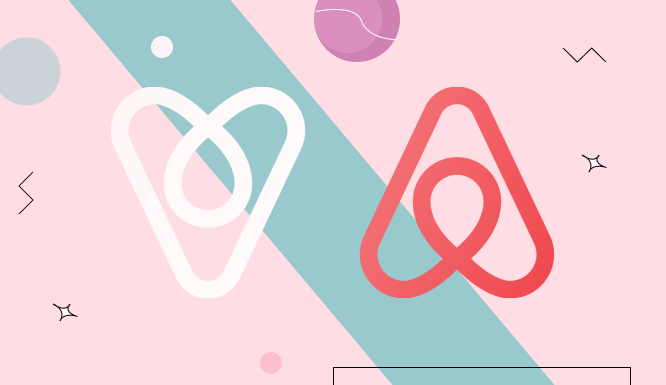
There’s a variety of choices as to which technology you need to build a mobile app.
We’d recommend looking for Ruby and JS developers. You’re going to need an application and JS frameworks (Ruby on Rails and React.JS respectively), for automation frameworks consider PhantomJS, RSpec.
Then choose a cloud provider (storage and hosting) like Amazon, SQL storage, and Messaging systems. You’ll also need Phone verification API and international payment system (if you’re going to operate internationally).
Who’d be interested in an AirBnB clone?
To clarify, by clone, we mean the business model and user roles. By no means a full copy (that would make no sense at all).
Marketplaces are most successful where middlemen are cut. Because a marketplace is an automated and convenient way of connecting buyers and suppliers for a fee. It means that to clone AirBnB you don’t necessarily have to build a travel app.
Industries like real-estate, e-commerce, education, HR (like our friends at youteam.co.uk) have tons of great examples of this business model.
Back in 2017, market researchers predicted that marketplaces are going to have a hard crisis due to the growing marketing expenses and accordingly increasing commissions. However, this didn’t happen in 2018 and 2019 yet. Marketplaces are still a profitable business for all parties involved. There’s no sign of global economic change in this field.
AirBnB-like Business Examples
Here’s a selection of interesting AirBnB-like apps. Each of the apps has a similar model, though they also have their USP (Unique Selling Point) as well.
Udemy: online course marketplace. Any expert can put his course online and the platform will sell it. If the reviews are excellent and the topic is right, the sales are going to be consistently high.
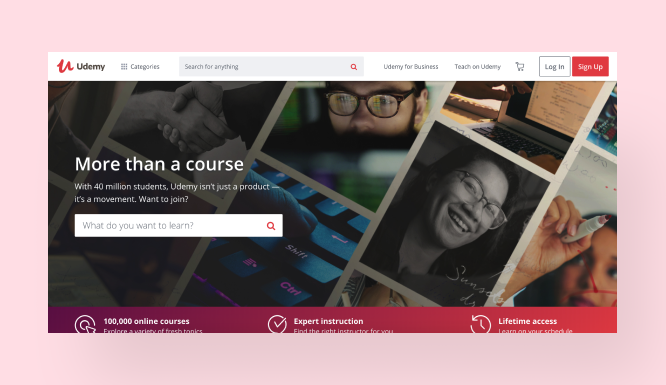
Etsy: world’s biggest creative art marketplace. Independent artists sell their craft to people who want unique items at low prices.
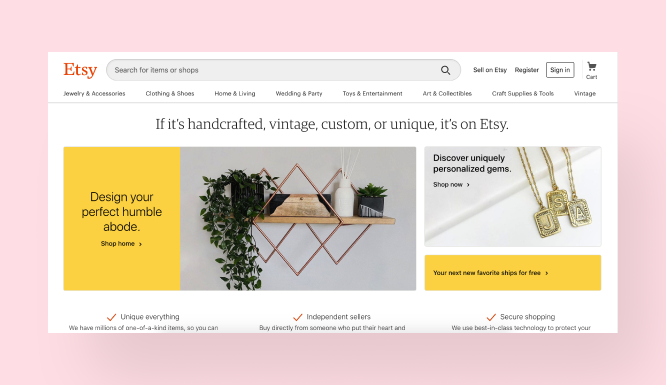
Fiverr: a freelance service marketplace. A place where any buyer can get any specialist from any spot in the world. The platform offers unbelievably cheap services, but the quality is often quite low because of a cursory background check.
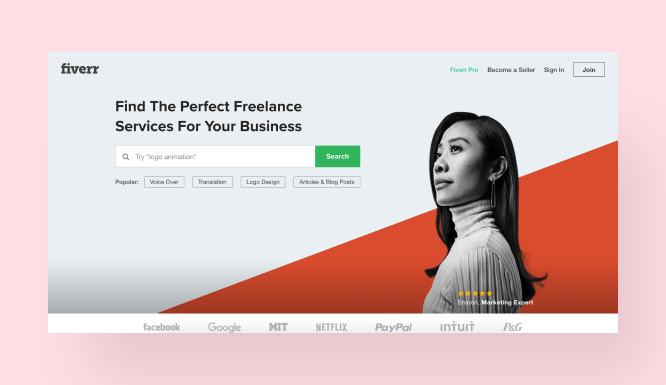
At first sight, you might not notice much in common between all these apps (there are thousands more of these). But they work similarly and the design would cost a similar amount of money.
Another thing these businesses have in common is flexibility. To be successful marketplace has to be responsive to market needs and offer service updates and variety. Packed with a strong marketing strategy this approach saved AirBnB from numerous troubles and opened opportunities to expand.
The conclusion is straightforward: who doesn’t update gets forgotten by the market.
How to do AirBnB App design?
All marketplaces heavily rely on customer satisfaction and convenience of use, that’s why a well-branded user interface and UX are the core of such business.
To design and develop an app like AirBnB or Uber/Etsy/Fiverr/Udemy/Amazon/etc. you can either go and find a freelancer, local agency, or an offshore UX design firm. Each choice has its own pros and cons:
Finding a freelancer takes a lot of time, the quality of work is inconsistent, it’s hard to manage freelancers, and they sometimes disappear at the worst moment to do so. But that’s the cheapest way to design a mobile app.
A local agency is a luxury option. The quality standards in top economy countries are high. Two things expensive design agencies have in common are: forcing useful input (UX research) and producing proper output documentation. They also take care of project management, which saves from missed deadlines and avoidable rework. From our experience, it’s the most expensive way, but with a flawless USP and business model – it’s worth it.
Remote UX/UI design agency. If you find an offshore UX design company that does precise initial research, proper design documentation, manage design teams and communicate your language – it’s a win. The cost could be a bit higher than the freelance. But you still get all the pros of a local design agency (including UX research, design teams, project management and precise design documentation).
Qubstudio fits both local design studio and offshore design company models as we work with national and global players.
Be sure to check out our recent works and reach out to us for design help.

